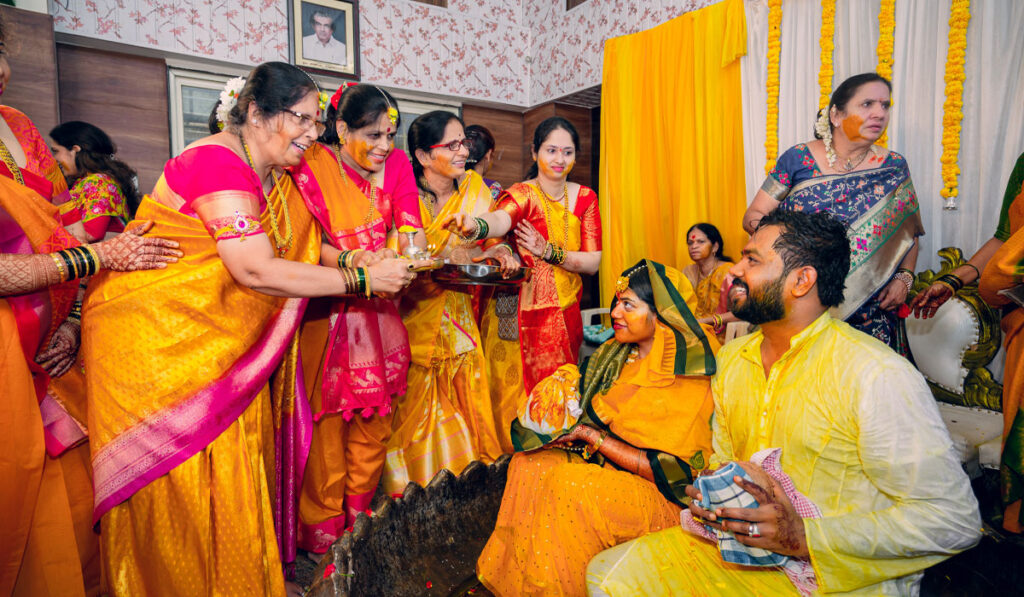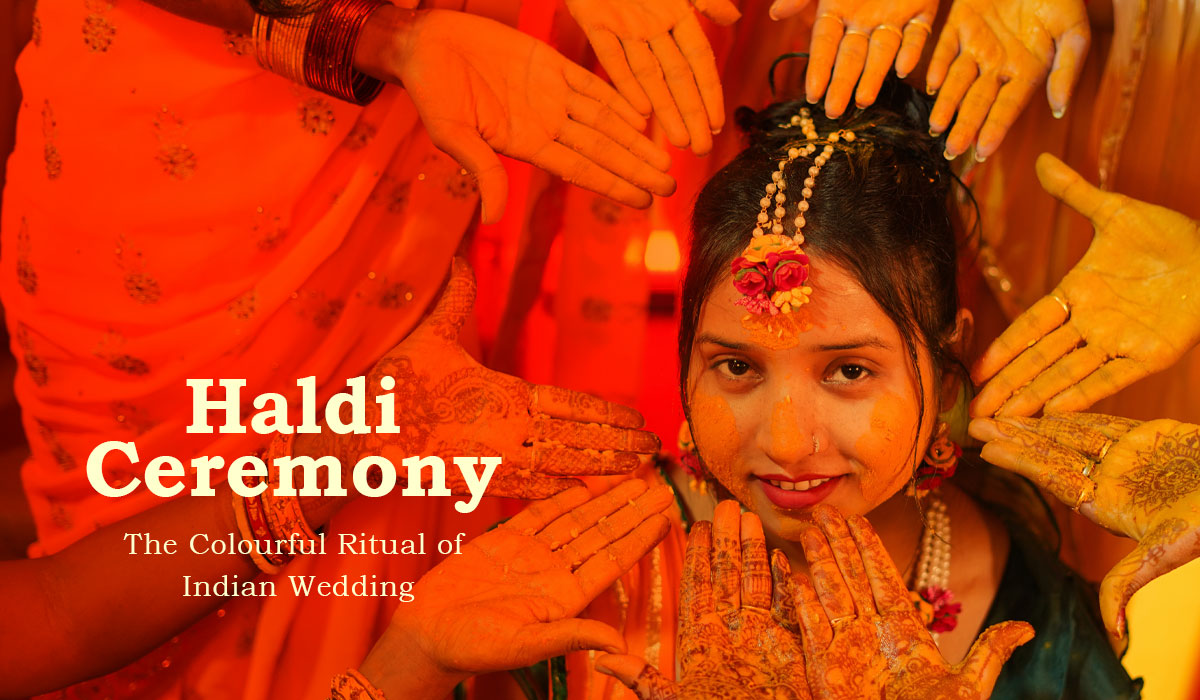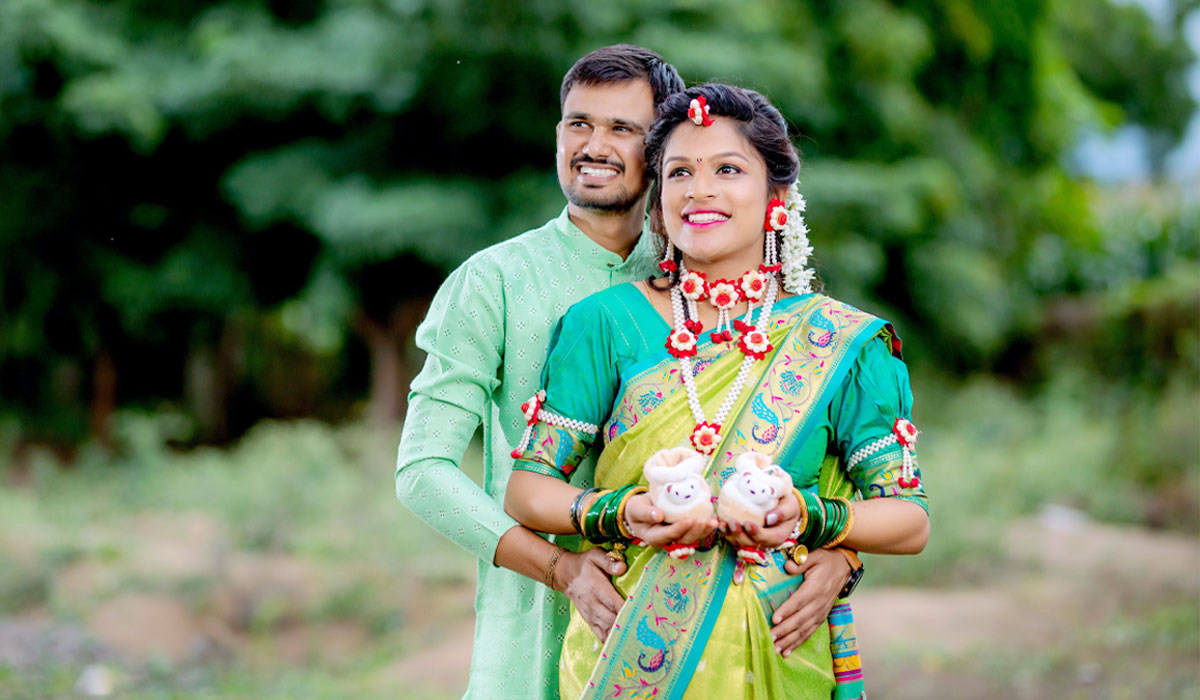As part of the Indian wedding ceremonies, the haldi ceremony is a great occasion for the bride and groom along with the family and friends. To make this occasion memorable a grand haldi function is organised. Friends and relatives dress themselves in haldi ceremony outfits. Special halid decoration is done in the home. Various fun activities, games and rituals are performed and the celebration activities carry in the hearts of those participating in this age-old tradition. If you are going to attend the haldi ceremony of your family, friend or relative you need to know certain things about this memorable occasion. The Haldi ceremony is one of the most beautiful occasions in the life of the bride and groom during the wedding ceremony in India. This day adds lots of beautiful memories to the life of the bride and groom. To mark this day special there are lots of fun activities and lots of rituals for blessing for happy married life. Why Haldi Ceremony in Hindu Weddings? In this post, we will talk about some of the interesting facts about the Haldi ceremony at weddings. exploring its significance and rituals.
What is the Haldi Ceremony?
The Haldi ceremony, also known as the “Pithi ceremony” or “Haldi ki rasam,” is a traditional pre-wedding ritual celebrated in Hindu weddings in India. It involves applying a paste made from turmeric, oil, and water to the bride and groom’s bodies. The ceremony is not only a fun and colourful event but also holds cultural and symbolic significance. It is typically conducted a day or two before the wedding and is celebrated with enthusiasm in various regions across the country.
Significance of the Haldi Ceremony

The Haldi ceremony holds deep cultural significance in Indian weddings. The ceremony is considered auspicious and is believed to bring good luck, ward off evil spirits, and enhance the couple’s beauty.
It also serves as a bonding experience for the families involved. It brings together relatives and friends in a lighthearted setting, fostering a sense of unity and joy as they prepare for the main event.
Significance of the Haldi
Haldi, or turmeric, is not just a spice but it holds a sacred place in Hindu rituals and Ayurveda. The yellow hue of turmeric symbolizes purity, prosperity, and the beginning of a new, promising journey. The application of Haldi paste on the bride and groom is believed to bring good luck, ward off evil spirits, and bestow them with a radiant glow.
Haldi Ceremony Preparation
Being a part of the wedding ceremony, a special arrangement is also made for the Haldi Ceremony function. The venue for the Haldi ceremony is often decorated with vibrant colours and flowers to create a festive ambience. The ceremony is usually held on the morning of the wedding day or a day before the wedding. The timing is considered auspicious.
Traditional Haldi Outfits
Friends and relatives dress themselves in special haldi outfits. The bride and groom usually wear simple and comfortable traditional haldi outfits, as the Haldi paste can stain clothing.
Photography and Videography:
The event is documented through photographs and videos, capturing the joyous and colourful moments.
Preparation of Haldi Paste:
The Haldi paste is usually made by mixing turmeric powder with sandalwood powder, milk, and rosewater or water. Sometimes, other ingredients like gram flour (besan) and aromatic herbs are added for fragrance. A paste made from turmeric, sandalwood, and other auspicious ingredients.
Haldi Ceremony Rituals and Traditions
This occasion is known by different names in the diverse culture of India. Remember that specific customs and rituals may vary based on regional and cultural differences within India. It’s always a good idea to check with the families involved to understand any unique traditions they follow.
Haldi Application:
A Haldi ceremony ritual is performed by family and friends. As per the traditions, married female relatives, especially those considered happily married, are invited to apply the Haldi paste on the couple. Their presence is believed to bring blessings for a happy and prosperous married life.
The bride or groom sitting in the haldi tub. The Haldi paste is applied to the bride’s or groom’s body, particularly the face, neck, hands, and feet. The application is done by family members and close friends, and sometimes, special rituals are performed by elderly family members.
Blessings and Well-Wishing:
Blessings always matter in Indian culture. During the Halidi ceremony rituals, family members and friends bless the bride and groom for a prosperous and happy married life. Elders may recite prayers or offer good wishes for the couple.
Post-Ceremony Traditions:
After the Haldi ceremony, it is customary for the bride and groom to take a ceremonial bath to wash off the turmeric paste to cleanse themselves before the main wedding rituals. The water used for the bath may be infused with herbs and flowers, further enhancing the cleansing and refreshing experience.
Traditional Songs, Music and Dance:
The atmosphere during the Haldi ceremony is often vibrant and colourful. Traditional songs and chants may be sung during the ceremony, adding to the cultural and spiritual significance. Various games and fun activities for the Haldi ceremony are organised. The playful atmosphere accompanies music, dance, and laughter, making it a memorable occasion for everyone involved.
Photogenic Tradition:
The vibrant and colourful nature of the Haldi ceremony makes it a favourite for wedding photographers. The candid moments of laughter, turmeric application, and playful interactions make for memorable photographs.
Interesting Facts: Haldi Function
Symbol of Purity and Blessings:
Turmeric is known for its antiseptic properties. Applying it is believed to cleanse and purify the body. The yellow colour of turmeric is associated with auspiciousness and is considered sacred in Hindu traditions.
Natural Beauty Treatment:
Turmeric is known for its skincare benefits. The application of Haldi is considered a natural way to enhance the bride and groom’s skin before their wedding day.
Traditional Beliefs:
The Haldi ceremony is rooted in ancient Indian traditions and is believed to ward off the evil eye. The yellow colour of turmeric is associated with the Sun, symbolizing prosperity and fertility.
Community and Family Participation:
The ceremony is a joyful occasion where family and friends come together to celebrate. It is common for the attendees to play traditional music, sing folk songs, and dance during the ceremony, adding to the festive atmosphere.
Regional Variations:
While the basic concept of the Haldi ceremony is similar, different regions in India may have variations in the rituals and customs associated with it. In some regions, a mixture of other ingredients like sandalwood, gram flour, and rose water may be added to the Haldi paste.
Customary Clothing:
The bride and groom typically wear old, yellow-coloured clothing during the ceremony, as the turmeric paste can stain clothes.
Bonding and Celebration:
The Haldi ceremony is a time for family bonding, and it provides an opportunity for both families to come together, share laughter, and strengthen their bonds.
Modern Adaptations:
While the Haldi ceremony has deep-rooted traditional significance, modern weddings may incorporate creative twists, such as themed Haldi parties or personalized Haldi paste recipes.
Conclusion
The Haldi ceremony is a beautiful and vibrant tradition that not only adds colour to Indian weddings but also symbolizes purity, blessings, and the coming together of families. Its golden hues and infectious joy embody the spirit of Indian weddings. It is a celebration of love, unity, and the vibrant cultural traditions that make Indian weddings truly unique. As turmeric adorns the faces of the bride and groom, the Haldi ceremony paints a picture of auspicious beginnings, weaving together the past, present, and future in a tapestry of tradition and joy.
FAQs
Why the haldi ceremony in Hindu weddings?
Also Check:




